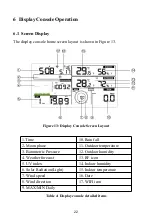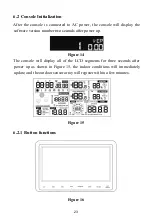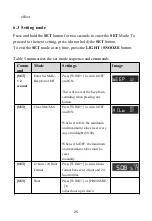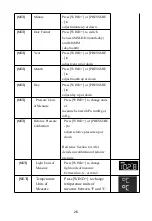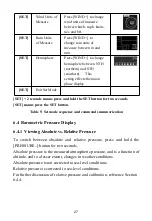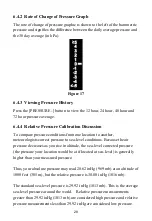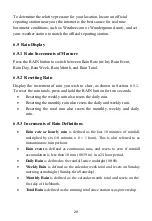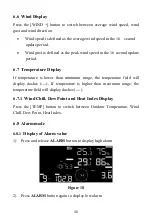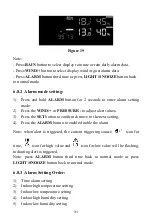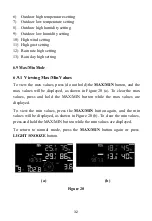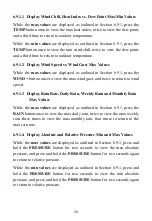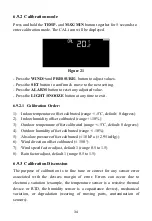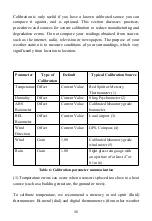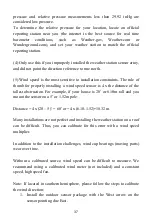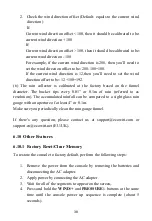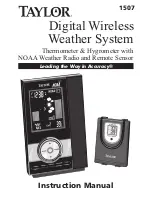
36
stations) are not a good source and have their own margin of error. Using a
local weather station in your area is also a poor source due to changes in
location, timing (airport weather stations are only updated once per hour).
Place the sensor in a shaded, controlled environment next to the fluid
thermometer, and allow the sensor to stabilize for 48 hours. Compare this
temperature to the fluid thermometer and adjust the console to match the
fluid thermometer.
(2) Humidity is a difficult parameter to measure electronically and drifts
over time due to contamination. In addition, location has an adverse affect
on humidity readings (installation over dirt vs. lawn for example).
Official stations recalibrate or replace humidity sensors on a yearly basis.
Due to manufacturing tolerances, the humidity is accurate to ± 5%. To
improve this accuracy, the indoor and outdoor humidity can be calibrated
using an accurate source, such as a sling psychrometer.
(3) The display console displays two different pressures: absolute (measured)
and relative (corrected to sea-level).
To compare pressure conditions from one location to another,
meteorologists correct pressure to sea-level conditions. Because the air
pressure decreases as you rise in altitude, the sea-level corrected pressure
(the pressure your location would be at if located at sea-level) is generally
higher than your measured pressure.
Thus, your absolute pressure may read 28.62 inHg (969 mb) at an altitude of
1000 feet (305 m), but the relative pressure is 30.00 inHg (1016 mb).
The standard sea-level pressure is 29.92 in Hg (1013 mb). This is the
average sea-level pressure around the world. Relative pressure
measurements greater than 29.92 inHg (1013 mb) are considered high
Summary of Contents for WS2910
Page 49: ...49 List display Weather Map ...
Page 50: ...50 Email Alerts ...

